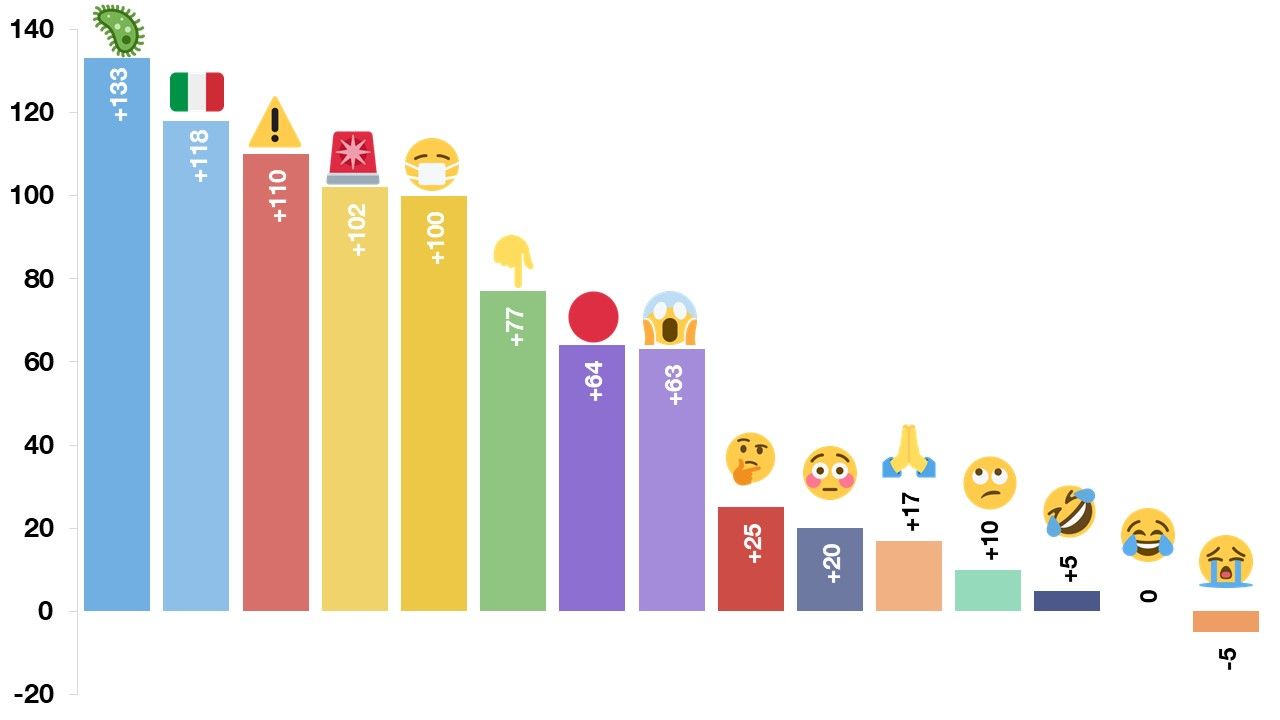Emojipedia Lookups At All Time High

When Jameela Jamil posted a tweet with a single ‘shocked face’ emoji last week, she didn't expect to see blowback. Much to Jamil's confusion, many responses felt the (since-deleted) single-emoji-tweet was inconsiderate, or mocking in tone.
- "This is in such poor taste"
- "it’s not a cute look to be a rich celeb using your platform for ridicule. Thought you were better than that"
- "people just out there doin they best"
Confused, Jamil responded:
“My emoji is my shock that this is what people are having to resort to. I didn’t remotely engage in the picking of the fighter or laugh at anyone. You are angry and scared and I understand that... but the responses of this read a lot into this. Let’s ask and then rage.”
It soon became clear what was going on.
The emoji Jamil had used – 🤭 Face with Hand Over Mouth – looks subtly different on her iPhone compared to those using the Twitter website.
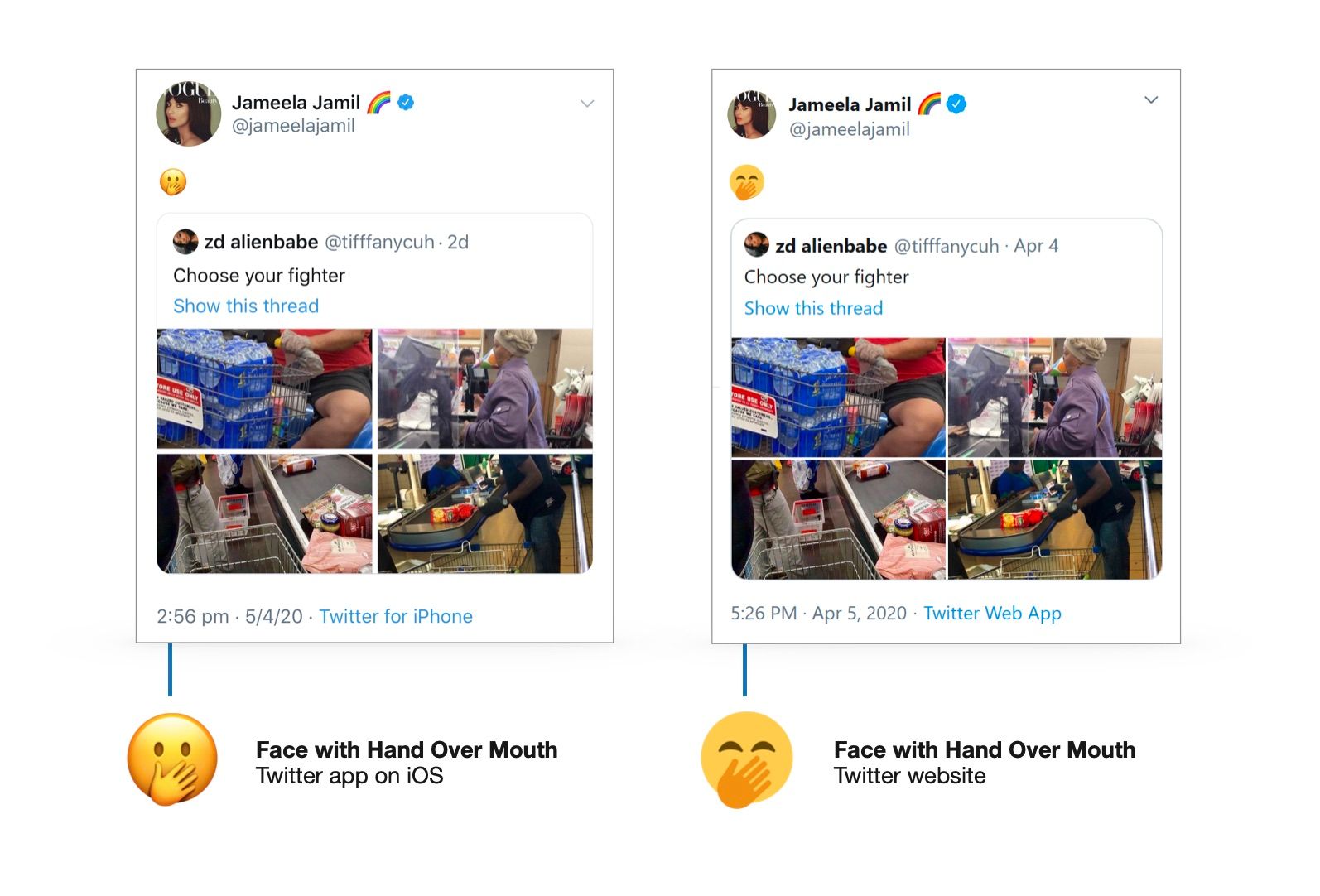
Soon, Jamil's followers pointed her to Emojipedia to see the various designs of this emoji on different platforms.
Solving Emoji Miscommunication
Twitter's metadata for each tweet is a big help when tracking down emoji confusion.
Each tweet shows the client (app) used to post it, which can be used to determine that Jamil's tweet was from an iPhone, where 🤭 Face with Hand Over Mouth appears as a gasping or shocked emoji. Jamil discovering the issue:
“Ah some people say it shows up on their phone as a Laughing emoji. It isn’t on my phone. It’s the hand covering mouth emoji in shock. This explains the rage. What a fucker.”
The same emoji when viewed on the Twitter website on a Windows PC or Mac shows Twitter's own emoji design, which shows a stifled laugh - the more common depiction of this emoji.
Ah. So emojis are PRETTY different on people’s phones it turns out. Good to know. This fucking emoji turned up as the giggling blushing emoji on a bunch of people’s phones, rather than the shock one I posted. No wonder they thought I was being a dick... be wary of emojis. pic.twitter.com/EFPsA7IVRV
— Jameela Jamil 🌈 (@jameelajamil) April 5, 2020
This emoji is scheduled for a fix in 2022, with the Unicode Emoji Subcommittee proposing a new emoji for the serious / shocked face with one hand covering the mouth. This would pave the way for vendors - mostly Apple here - to unify the existing emoji as stifling a laugh.
(Disclaimer: I am member and former vice chair of this committee)
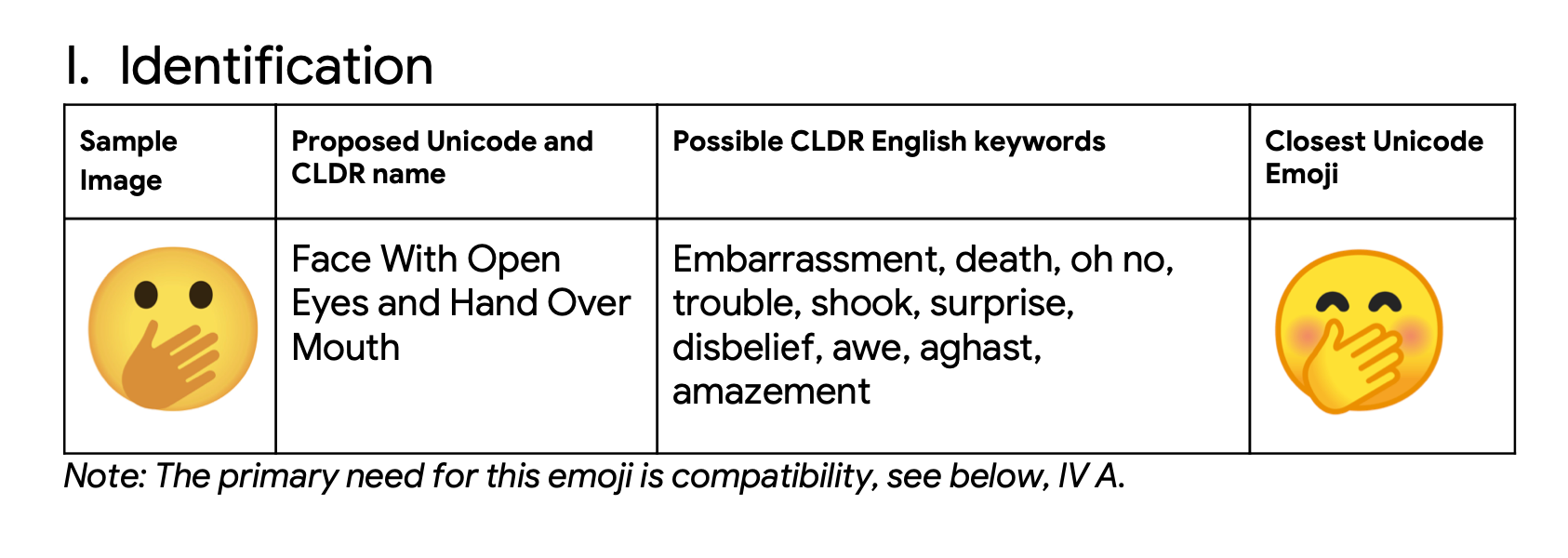
With many people working from home and communicating remotely with friends, family and coworkers, it's only natural that miscommunications will arise. Especially, but not exclusively, when an emoji conveys different ideas on multiple platforms.
Emojipedia Lookups are...up
In April 2020, Emojipedia is on track to serve over 50 million pages of emoji information. This compares to a usual period which sees around 35 million page views each month.
Intentions vary, but reasons users visit Emojipedia can be to:
- 📙 look up what an emoji is intended to mean
- ✌️ learn how people actually use an emoji
- 📋 copy and paste an emoji
- 🔍 see each emoji in more detail at larger sizes
- 🔄 compare how an emoji looks cross-platform
- 📜 find out what an emoji used to look like
It's possible that a combination of all of above is driving the increased demand for Emojipedia in a time where we are communicating remotely more than ever.
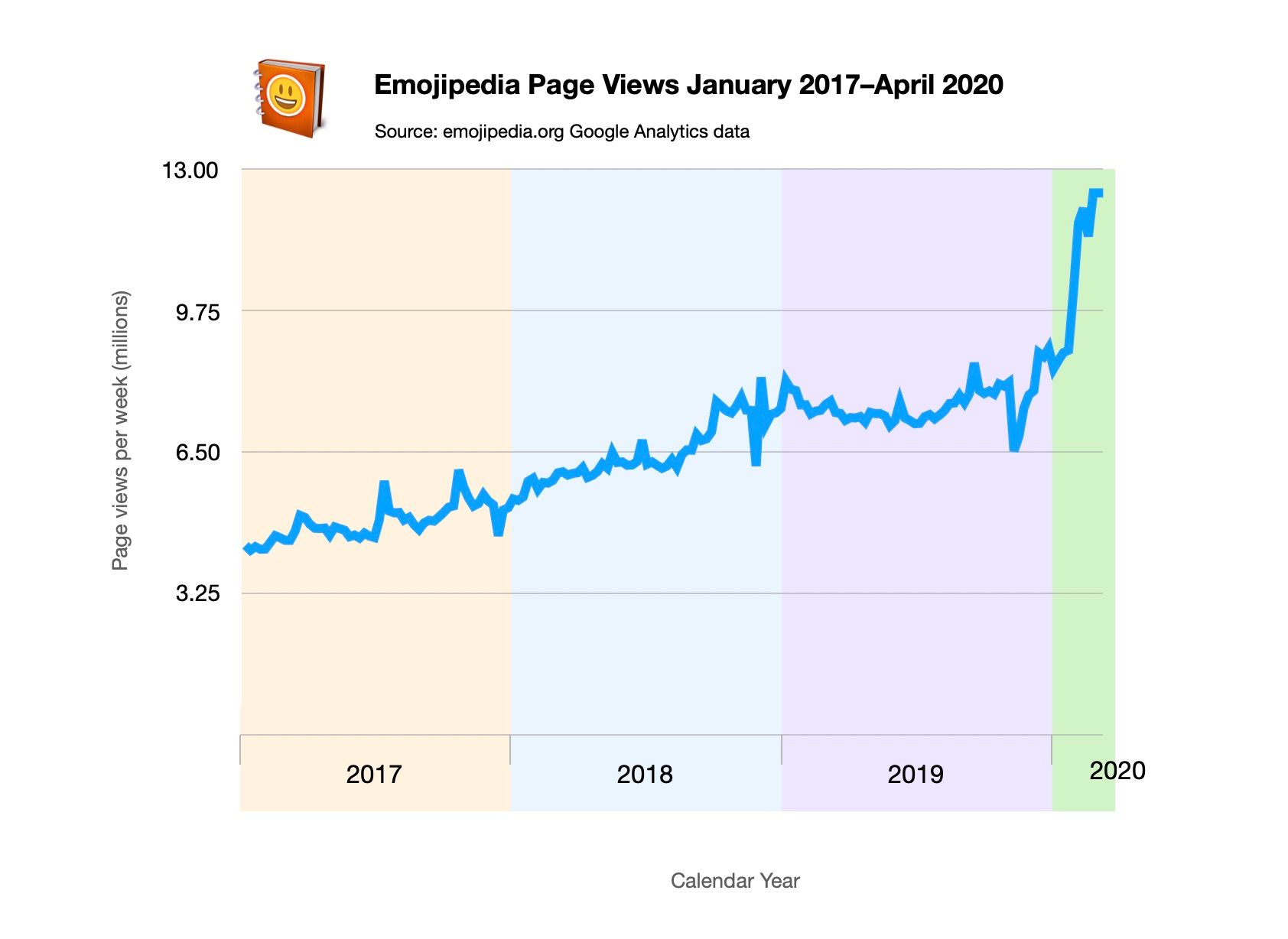
More Miscommunication
Jameela Jamil isn't the only one getting caught out with an emoji that isn't interpreted how she expected.
Jessica Chastain, when discovering her Samsung phone showed an emoji unlike any other, tweeted:
“Now I look like a pervert”
Why? In old versions of Samsung's phone software, 🤤 Drooling Face looked more like the wide-eyed 😳 Flushed Face than what many platforms currently show.
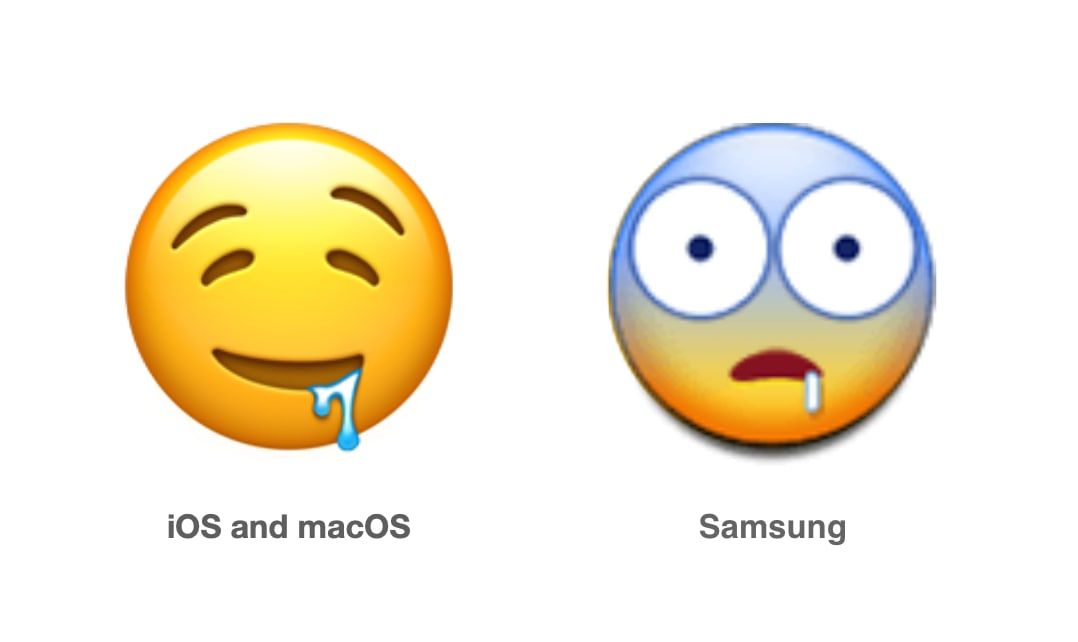
Chastain, using a Samsung phone, wouldn't have been aware that what she sent as shock, was showing as drooling for others.
It's not that Samsung's emoji wasn't drooling, but it wasn't drooling enough.
Is this a Samsung thing?!
— Jessica Chastain (@jes_chastain) February 1, 2018
The shocked emoji is what I put in my tweet and is what I see when I go on my twitter. A friend forwarded me an article that referred to it. The emoji is completely different! Is that what all of you see? Its drooling. Now I look like a pervert... pic.twitter.com/F3aaRSBzng
Similarly in 2017 beloved children's character Cookie Monster discovered that the delicious chocolate chip cookies he had been sending in emoji form didn't appear that way for everyone:
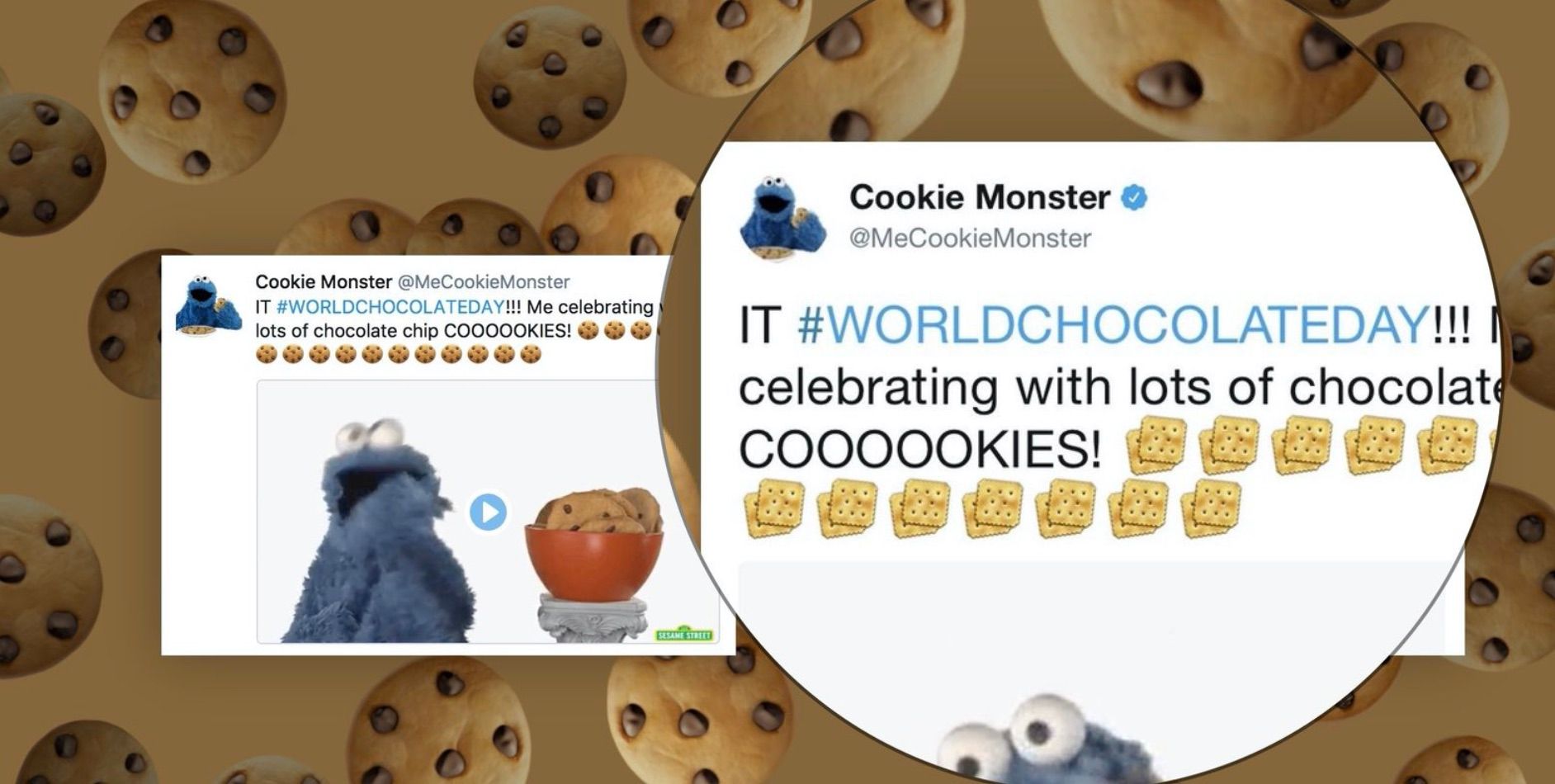
There's also the challenge of when the emojis are too damn small, as experienced recently by Brenda Boyd sending her local council a 🖕 Middle Finger when intending to send a 👍 Thumbs Up, much to her embarassment.
I ❤️ Brenda pic.twitter.com/IOxYb1wT5H
— Amanda (@Pandamoanimum) April 5, 2020
Those working from home or keeping in touch with family, or simply commenting on TikTok, Instagram, Twitter or Facebook might want to keep a few of these emoji mismatches in mind.
🥺 Pleading Face
For relative emoji newcomer 🥺 Pleading Face, approved in 2018, the difference between how this pleads when used in Twitter for iOS vs Twitter for web is quite distinct:

While many emojis have converged on similar appearances in recent years, many remain quite distinct.
It may not matter if the ribbon on each 👒 Woman’s Hat has a different color, but a face like this is a different story.
🥴 Woozy Face
Another recent emoji to watch is 🥴 Woozy Face, also known by its longer name Face with Uneven Eyes and Wavy Mouth. All companies arguably do follow the Unicode character name, but the mood varies considerably. Google, WhatsApp and Facebook have a distinctly intoxicated face, while Twitter appears somewhat lovestruck.
Apple's version of 🥴 Woozy Face - an instant hit on the web – is far more ambiguous in appearance. For better or worse.
So for this emoji in particular, if ambiguity is what you're aiming for, be aware you might end up with something more specific on other operating systems, and even changing in many apps if using Android.
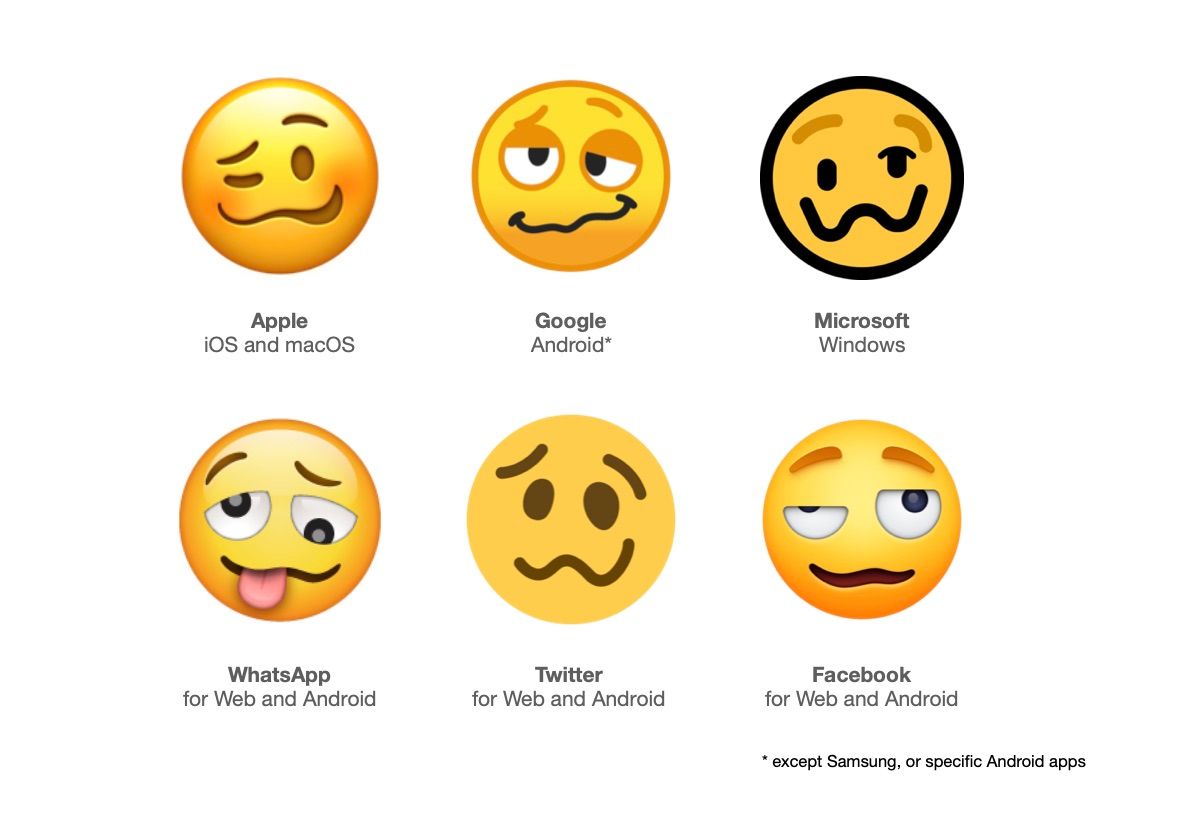
😵 Dizzy Face
Another face to see two divergent paths in recent years has been what Unicode calls the 😵 Dizzy Face.
This emoji dates back to the earliest emoji sets in Japan, where it was shown as a face with both eyes shown as X shapes. A similar design was found on both Docomo (then styled NTT DoCoMo) and au by KDDI.

The trouble with an emoji like Dizzy Face is that the name doesn't really correlate with what many consider to be a dizzy face. Documentation from 2008 lists Dizzy Face as the name for this emoji, used when standardizing the Japanese emoji set into the Unicode Standard.
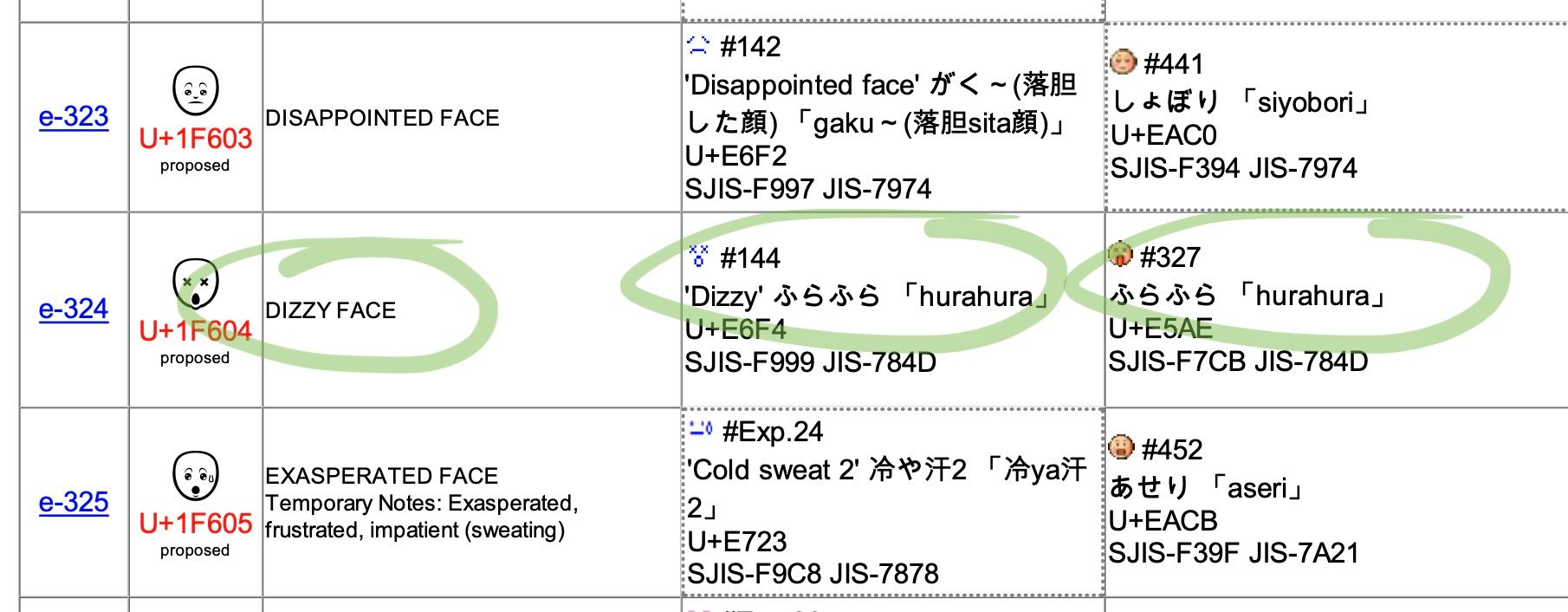
Given the original emojis were added to Unicode for compatibility with Japan, one goal has generally been to keep these designs similar to their original encoding. Not that there haven't been deviations over the years.
In much of the world, a face that looks like "dizzy face" on most platforms (with X for eyes) would be considered a dead face. Eek 😬
So what does it look like on major platforms now, and then?
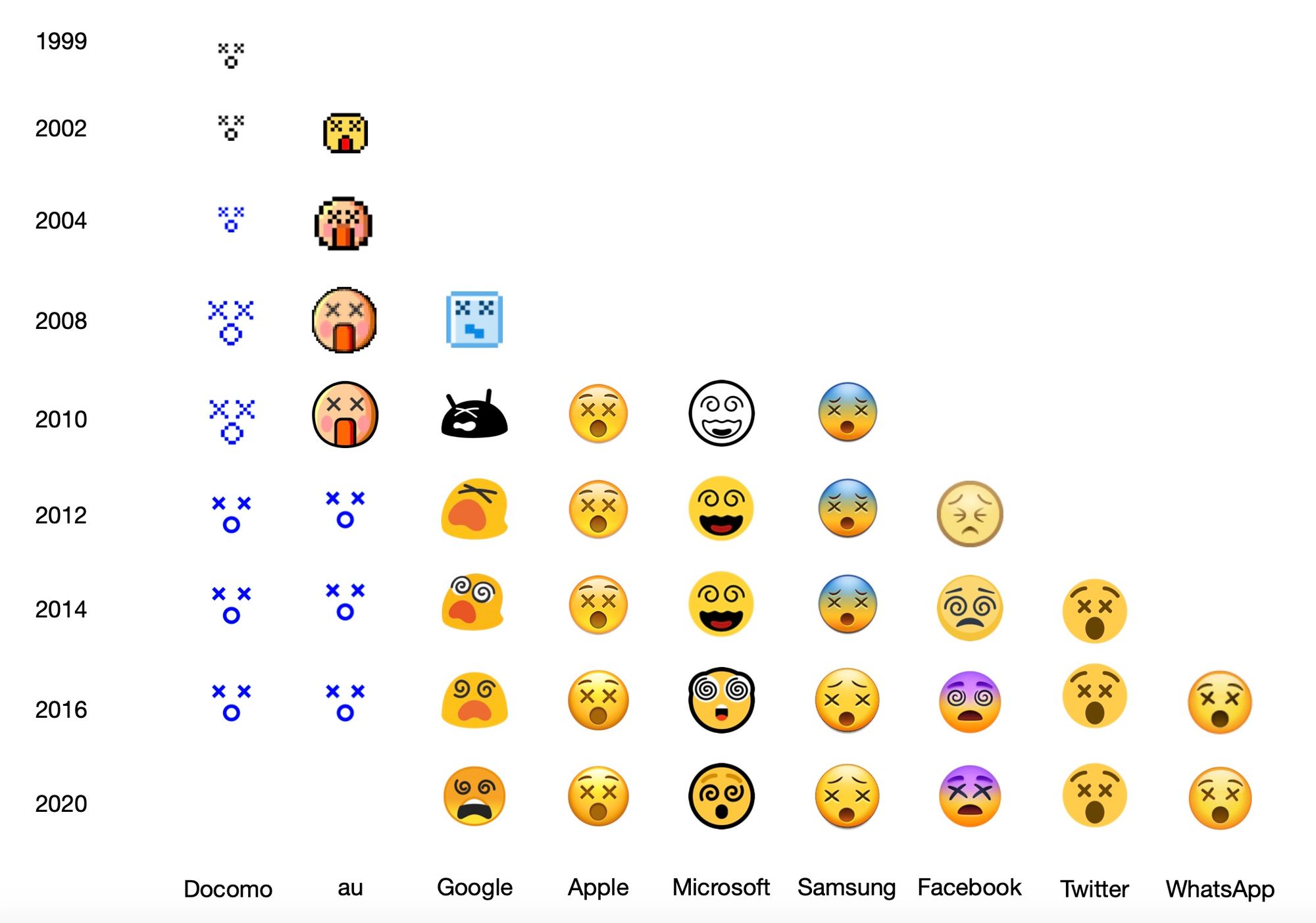
Emojipedia flags this emoji in particular, to let users know that if you intended to show "spiral eyes", you'll only find that on two major platforms.

For this specific case, the Unicode Emoji Subcommittee is proposing a fix, by introducing a new emoji for “Face With X Eyes”, which if approved, would mean all existing versions of the Dizzy Face emoji would be replaced with spiral eyes.
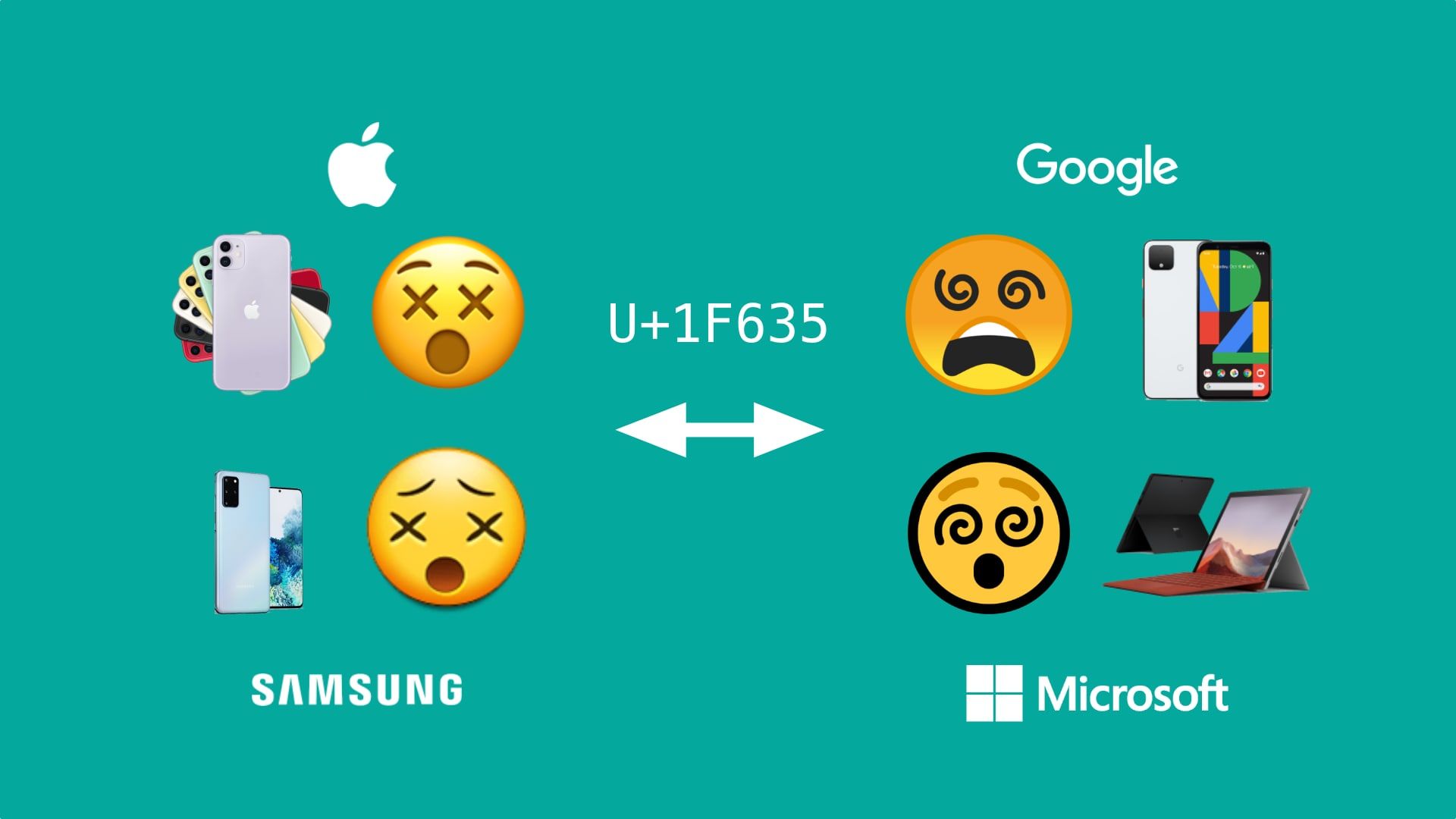
An alternative approach that I endorse is to keep the existing Dizzy Face emoji with X-eyes (retaining backward-compatibility) and introducing a new emoji: Face With Spiral Eyes to fill the gap.
This latter option, if taken up, could involve renaming the current Dizzy Face to Face With X Eyes for consistency, and to take the subjective nature out of the name.
👯 Bunny Ears
A similar divergence issue has been resolved in recent years, whereby 👯 People with Bunny Ears showed two people on some platforms, and one person on others.
This was a result of two distinct emojis in Japan being merged into a single emoji codepoint in Unicode. Instead of having both, vendors simply converged on the two-person design, eventually.
In an odd way, this is likely the least of people's concern, as the vibe remains the same between different versions, even when the depiction is quite different. The concern remains mostly on specific facial expressions, which cause the most emoji grief.
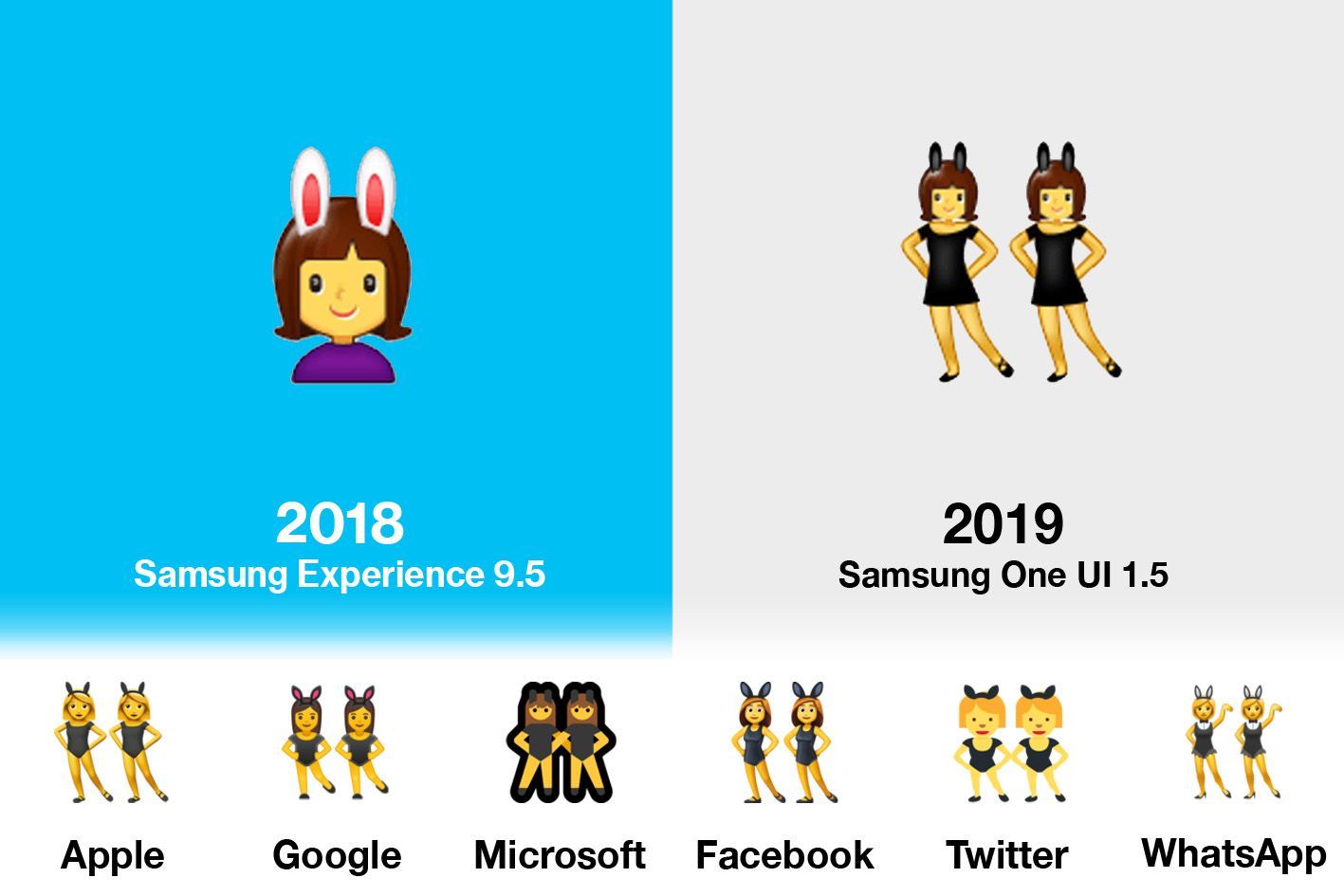
Is emoji use up or down? Any other changes?
In the coming weeks we will be looking at broader questions of emoji use, and how it is changing at a time where the whole world feels like it has turned upside down.
We've been fielding many questions about whether we are using emojis differently in this work-from-home era, and hope to answer as many as we can once we finish crunching the data.
In the meantime, you might be interested in our recent analysis of which emojis are used in tweets about COVID-19:
